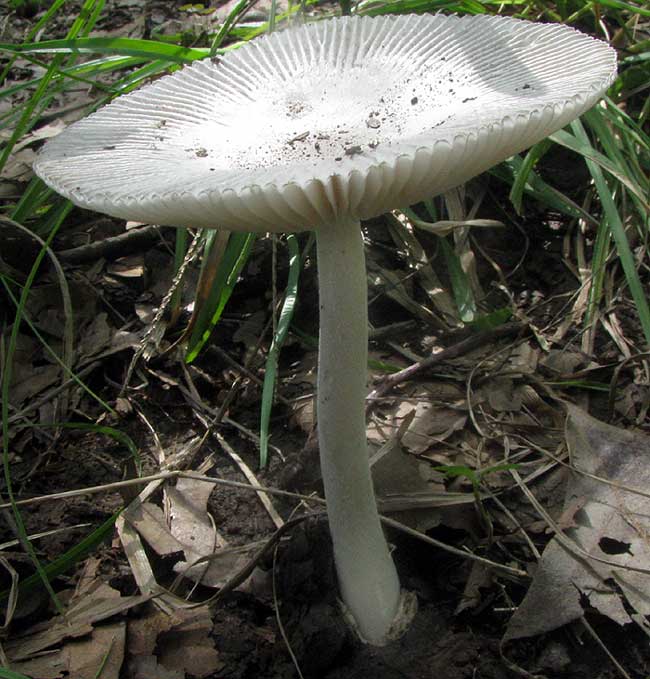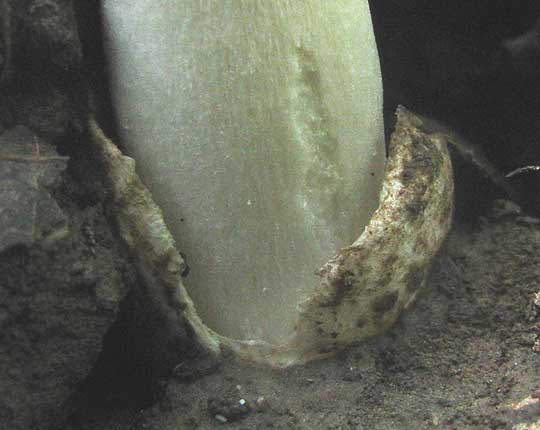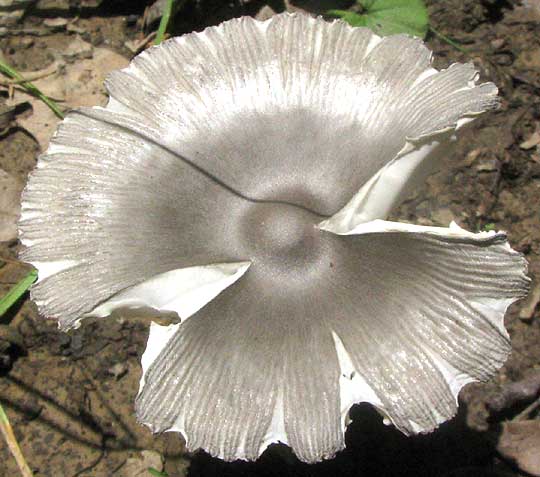Excerpts from Jim Conrad's
Naturalist Newsletter

from the July 29, 2012 Newsletter issued from the woods of the Loess Hill Region a few miles east of Natchez, Mississippi, USA
GRISETTE MUSHROOM
About 35 feet (10m) from the population of Amanita cokeri, in a spot receiving more foot traffic but still mostly grassy, yet another small group of large, white mushrooms producing white spores arose. You can see a four-inch tall one (10cm) above.
The cap is strewn with debris gathered while emerging from the ground; it bears no scales or "warts" like Amanita cokeri. A striking feature of the cap is its distinct, slender lines radiating from the center. Also notice that in this species no ring encircle the stem just below the cap, but the stem does arise from a cuplike structure, the "cup," or "volva," a close-up of which is shown below:

So, is this yet another Amanita? It turns out that it is, one common enough to bear a common name. It's the Grisette, AMANITA VAGINATA, an ID arrived at with the help of Michael Kuo's "Key to a Few Common and Distinctive Amanitas" at http://www.mushroomexpert.com/amanita_commondistinctive.html.
But, Michael Kuo also says that "... likely, there are many species going under the name 'Amanita vaginata.' Amanita expert Rod Tulloss treats literally dozens of unnamed, vaginata-like, numbered taxa ("species 46," and so on) in his keys to North American amanitas."
Another field mark apparent on older mushrooms with caps darkened with age is a curious little hill, or "umbo," in the cap's center, as shown on the same mushroom shown above a few days later after who-knows-what misfortunes removed hunks of its cap, below:

As demonstrated by our mushrooms, ecologically Grisettes specialize in, as Kuo writes, "... grassy areas at the edges of woods -- or in lawns that are not meticulously manicured." Grisettes are widely distributed throughout North America.
They are listed as edible but casual collectors are warned to avoid them because they can so easily be confused with poisonous look-alikes.